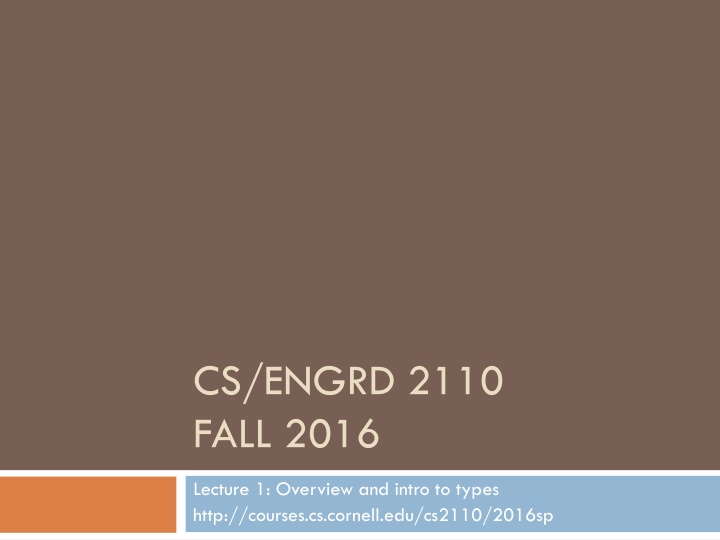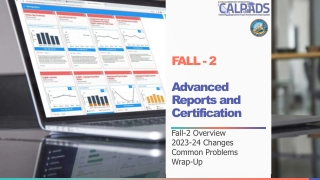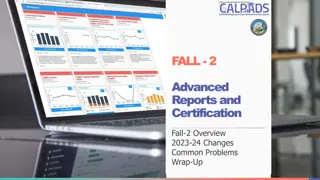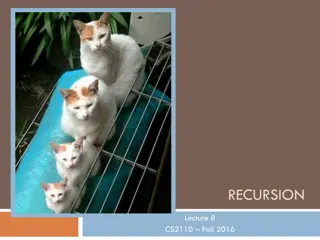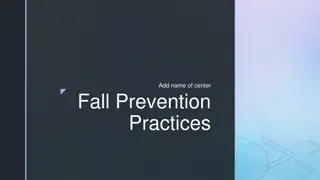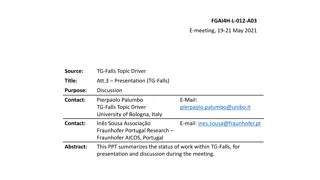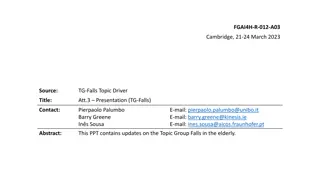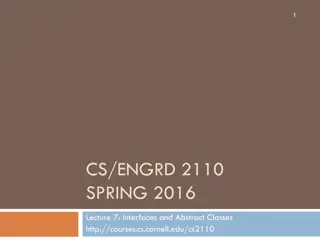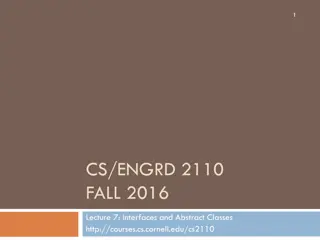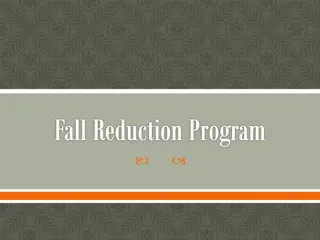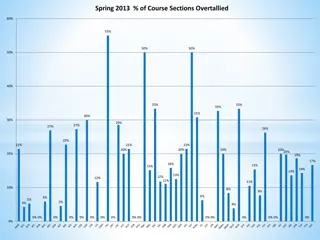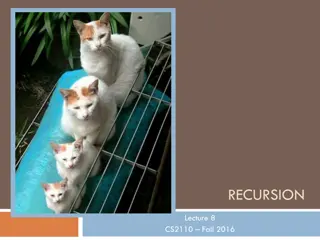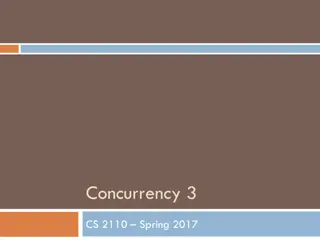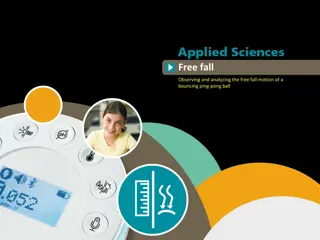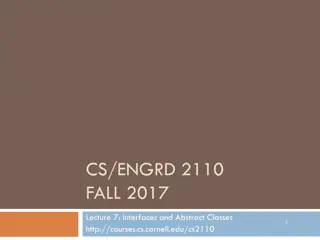Overview of CS/ENGRD.2110.FALL.2016 Lecture
CS/ENGRD.2110.FALL.2016 Lecture provides an introduction to various topics including object-oriented programming, abstract data types, algorithms, and data structures. Students will explore Java, reasoning about complex problems, and algorithm implementation. Practical applications in fields like particle physics and financial management showcase the practicality of the course material. The course equips students with essential programming and problem-solving skills necessary for success in computer science-related fields.
Download Presentation

Please find below an Image/Link to download the presentation.
The content on the website is provided AS IS for your information and personal use only. It may not be sold, licensed, or shared on other websites without obtaining consent from the author.If you encounter any issues during the download, it is possible that the publisher has removed the file from their server.
You are allowed to download the files provided on this website for personal or commercial use, subject to the condition that they are used lawfully. All files are the property of their respective owners.
The content on the website is provided AS IS for your information and personal use only. It may not be sold, licensed, or shared on other websites without obtaining consent from the author.
E N D
Presentation Transcript
CS/ENGRD 2110 FALL 2016 Lecture 1: Overview and intro to types http://courses.cs.cornell.edu/cs2110/2016sp
Welcome to CS2110! 2 325 Freshmen 112 Sophomores 044 Juniors 044 Seniors 042 Meng/Masters 021 Graduate PhD Instructors: David Gries, Ross Tate Recitation leaders: 24 Consultants: 19 Above numbers were from several days ago. Today s enrollment: 600.
Did you receive this email yesterday? 3 Welcome 1. Classes start tomorrow, but there are NO 2110 discussion/recitations tomorrow. Discussions/recitations start next week. 2. On the course website lecturenotes page: http://www.cs.cornell.edu/courses/CS2110/2016sp/lecturenot es.html If not, there s something wrong with how you forward from your Cornell netid About 5 people s email bounced.
Welcome to CS2110! 4 Learning about: OO, abstract data types, generics, Java Collections, Reasoning about complex problems, analyzing algorithms we create to solve them, and implementing algorithms with elegant, easy-to-understand, correct code Testing; Reasoning about correctness Data structures: linked lists, trees, hash tables, graphs, etc. Recursion Algorithmic complexity Parallelism threads of execution
Usefulness of 2110 5 This summer I'm working in particle physics, making simula- tions of some of the background signal we d expect to see in our detector for an experiment run in the particle accelerator. What I'm working on a clustering algorithm to put together energy depositions from several quantized points in the detector to learn what the initial particle's energy and position was. After some thought, I decided the best first sweep over this data would be to do a depth first search starting about a high energy deposition in the calorimeter. It works great, and my PI was very excited about the results!
Usefulness of 2110 6 I am working at a startup in Silicon Valley this summer that does subscription-based financial management and billing among other things. It has been pretty incredible the amount I've learned from your class that relates to this internship and I have definitely decided to pursue computer science (I was initially engineering physics).
Is CS2110 right for you? 7 Knowledge of Java not required Only ~30% of you know Java others know Matlab, Python Requirement: comfort with some programming language, on the level of CS1110 (Python based) and CS1112 (Matlab based). Prior knowledge of OO not required. We assume you do not know Java!
Homework! 8 Homework 1. Read article Why Software is So Bad. Link: Course website -> Lectures notes (Lecture 1) Homework 2. Get Java and Eclipse on your computer Homework 3. Spend some time perusing the course website. Look at course information, resources, links, etc. Homework 4. BEFORE EACH LECTURE: download the pdf form of the slides, bring them to class, and look through them during the lecture. We will be projecting not only PPT but also Eclipse and other things; having the PPT slides in paper form or on your laptop/tablet can help you during the lecture
Lectures 9 TR 10:10-11am, Statler auditorium Attendance mandatory http://tbn0.google.com/images?q=tbn:dvbkIjDCZPLH5M:http://wilsonshistoryclass.com/blog/wp-content/uploads/2008/11/sleepinggirl.jpg ENGRD 2110 or CS 2110? Same course! We call it CS 2110 in online materials Non-engineers sign up for CS 2110 Engineers sign up for ENGRD 2110
Sections (Recitations) Some time EARLY, visit StudentCenter and change your section to even out the numbers 10 T 12:20 4 sections: 35, 33, 33, 26 T 1:25 2 sections: 39, 36, 18 T 2:30 2 sections: 39, 8 T 3:35 1 section: 39, 10 W 12:20 2 sections: 40, 40, 22 W 01:25 2 sections: 40, 39, 17 W 02:30 1 section: 40, 23 W 07:30 1 section: 19 Attendance is mandatory Sometimes review, help on homework, new material No permission needed to switch sections, but do register for whichever one you attend
CS2111 11 An enrichment course We want to help students who might otherwise feel overwhelmed by CS2110 Gives more explanation of core ideas behind Java, programming, data structures, assignments, etc. Taught by Gries and Tate, 1 credit S/U Only for students who also take CS2110 Only requirement: Attend weekly lecture
CS2111 12 I would just like to thank you for taking the time to hold CS2111 this year. You have no idea how the class helped and impacted a lot of us. I would never had "survived" CS2110 without your generous share of your knowledge. I appreciated your time.
Academic Excellence Workshops 13 Two-hour labs: students work together in cooperative setting One credit S/U course based on attendance Time and location TBA Visit Olin 167 and ask about AEWs See website for more info: www.engineering.cornell.edu/academics/undergraduate/curriculu m/courses/workshops/index.cfm
Piazza 14 Click link on our web page to register Incredible resource for 24 x 7 help with anything We keep an eye on it and answer questions. YOU can (and will) too. Visit the Piazza often.
Resources 15 Book: Frank M. Carrano, Data Structures and Abstractions with Java, 3nd ed., Prentice Hall 2nd edition is okay. E-book not required Share textbook. Need access to it from time to time Copies on reserve in Engr Library PPT slides (on course website and Piazza) outline all of OO in Java. Has index at beginning Great Java resource: online materials at Oracle JDK web site. Google has it indexed. VideoNote: videos of lectures from Spring 2014. http://www.videonote.com/cornell. Log in with netid
Obtaining Java 16 Follow instructions on our Resources web page Make sure you have Java JDK 1.8, if not download and install. We explain how on the web page. Then download and install the Eclipse IDE Test it out: launch Eclipse and click new>Java Project This is one of a few ways Java can be used When program runs, output is visible in a little console window
Eclipse IDE 17 IDE: Integrated Development Environment Helps you write your code Protects against many common mistakes At runtime, helps with debugging Follow Resources link to download and install
DrJava IDE 18 IDE: Integrated Development Environment DrJava is a much simpler IDE, few features We use it only to demo Java features and programming concepts. Has an interactions pane , which allows trying things without requiring a complete Java program. DON T use it for course assignments use Eclipse Free at www.drjava.org. Download the jar file, not the app!!!
Coursework 19 7 8 programming assignments (37%) Two prelims (14% 16%) Final exam (30%) Course evaluation (1%) Possible surprise quizzes (2%) Formula will change as course progresses and we make changes in assignments, give quizzes, etc. Exams are most important aspect in determining final grade
Assignments: a real learning experience 20 Teams of one or two A0 and then A1 will be posted soon on the CMS Finding a partner: choose your own or contact your TA. Piazza can be helpful. One way to do an assignment: Wait until the day before it is due. Result: Frustration, anger, impatience, long lines in consulting room. No fun. Not a good educational experience One way to do an assignment: Read the handout immediately. Work on it every (other) day. Ponder. Look things up. Get help in consulting room, with no lines, or office hours. It s fun, hard work but a great learning experience
Academic Integrity Trust but verify! 21 98% of you are honest and don t try to cheat We use artificial intelligence tools to check each homework assignment, so catch the other 2% The software is very accurate! It tests your code and also notices similarities between code written by different people Sure, you can fool this software but it s easier to just do the assignments and if you try to fool it and screw up, you might fail the assignment or even the whole course.
Types in Java 22 References in text and in JavaSummary type: A.14 slide 4 variable: A.13 slide 7 variable declaration: A.15 slide 7 Primitive types, A.16, back inside cover slide 5 Constants, A.17 slide 20 Assignment, A.18-A.20 slide 8 Casting, A.21 slide 6 Expressions: A.22-A.23 Precedences: A.24, back inside cover Unicode character codes, back inside cover
Type: Set of values together with operations on them. 23 Type integer: God s integers! Can represent them in many ways decimal, binary, octal, maybe as strokes |||| values: , 3, 2, 1, 0, 1, 2, 3, operations: +, , *, /, unary (that s 4) Do you know how your computer represents them?
The integers as the basis 24 Leopold Kronecker (1823-1891), Prussian mathematician, Argued that arithmetic and analysis should be founded on the whole numbers (integers): Die ganzen Zahlen hat der liebe Gott gemacht, alles andere ist Menschenwerk. The beloved God made the whole numbers, everything else is the work of man. God s integers! He insisted on the constructibility of math objects. Real numbers do they really exist? You can t compute most of them because they have an infinite number of digits.
Type: Set of values together with operations on them. 25 Valid Python sequence: x= 100; x= Hello World ; x= (1, 2, 3, 4, 5 ); Matlab and Python are weakly typed: One variable can contain at different times a number, a string, an array, etc. One isn t so concerned with types. Corresponding Java int x; x= 100; Java strongly typed: A variable must be declared before it is used and can contain only values of the type with which it is declared x= Hello ; Declaration of x: x can contain only values of type int Illegal assignment: Hello is not an int
Weakly typed versus strongly typed 26 Weakly typed: Shorter programs, generally. Programmer has more freedom, language is more liberal in applying operations to values. Strongly typed: Programmer has to be more disciplined. Declarations provide a place for comments about variables. More errors caught at compile-time (e.g. it s a syntax error to assign a string to an int variable). Note: weak and strong typing not well defined; literature has several definitions
Type: Set of values together with operations on them. 27 Java Type int: b % c : remainder when b is divided by c. 67 % 60 = 7 values: 231 .. 231 1 operations: +, , *, /, %, unary Java designers decided on this Principle: primitive operations on type int should yield an int.
Most-used primitive types Inside back cover, A-6..7 b % c : remainder when b is divided by c. 67 % 60 = 7 28 int: values: 231 .. 231 1 operations: +, , *, /, %, unary double: values like : 22.51E6, 24.9 operations: +, , *, /, %, unary Write values in scientific notation Use single quotes for char: values like : 'V' '$' '\n' operations: none type char. '\n' is new-line char boolean: values: true false operations: ! (not), && (and), || (or) Can t use integers as booleans!
About primitive type int Inside back cover, A-6..7 Java Principle: A basic operation of type int must produce an int 29 int: values: 231 .. 231 1, i.e. operations: +, , *, /, %, unary Integer.MAX_VALUE: name for max int value: 231 1: 2147483647 Integer.MAX_VALUE + 1 is 231: -2147483648 WRAP-AROUND
Primitive number types Inside back cover, A-6..7 30 Integer types: byteshort intlong 1 byte 2 bytes 4 bytes 8 bytes usual operators usual operators Real types: floatdouble 22.51E6 4 bytes 8 bytes 24.9 Use these to save space. Don t worry about this in next 7-8 weeks. Use int and Have an array of 1,000,000 integers in range 0..7? Use a byte array rather than an int array double.
Casting among types Page A-9, inside back cover 31 31 (int) 3.2 casts double value 3.2 to an int any number type any number expression may be automatic cast wider narrow byte short int long float double must be explicit cast, may truncate 3 evaluates to 3 (int) 3.2 evaluates to 3 (int) is a unary prefix operator, just like
Char is a number type! Page A-9, inside back cover 32 32 char is a number type: (int) 'V' (char) 86 Unicode repr. in decimal: 86 'V' Unicode: 16-bit char repr. Encodes chars in just about all languages. In java, use hexadecimal (base 16) char literals: '\u0950' is ' Om, the sound of the universe '\u5927' is ' ' is (I think) a transliteration '\u885b' is ' ' of David into Chinese (Da Wei) '\u0041' is 'A' '\u0042' is 'B' '\u0056' is 'V' '\u0024' is $' See www.unicode.org
Basic variable declaration Page A-6 33 33 Declaration: gives name of variable, type of value it can contain int x; Declaration of x, can contain an int value double area; Declaration of area, can contain a double value int[]a; Declaration of a, can contain a pointer to an int array. We explain arrays much later x 5 area 20.1 a int double int[]
Assignment statement 34 34 Much like in other languages need ; at end: <variable>= <expression> ; int x; x= 10; other code x= x+1; Have to declare x before assigning to it. int x= 10; other code x= x+1; Can combine declaration with an initializing assignment. Shorthand for a declaration followed by an assignment.
Assignment statement type restriction 35 35 Every expression has a type, which depends on its operators and the types of its operands in a natural way. Rule: In x= e; type of e has to be same as or narrower than type of x. Reason: To avoid possibly losing info without the programmer realizing it. double y= 5 + 1; The value of 5+1 is automatically cast from type int to type double. int x= 75.5 + 1; Illegal: The exp value is of type double. int x= (int) (75.5 + 1); You can cast to int explicitly. 76 will be stored in x.
A function in Matlab, Python, and Java 36 36 function s = sum(a, b) % Return sum of a and b s= a + b; Matlab def sum(a, b): """ return sum of a and b""" return a + b Python Specification: in comment before function /** return sum of a and b */ publicstaticdouble sum(double a, double b) { return a + b; } return type Declarations of parameters a and b
